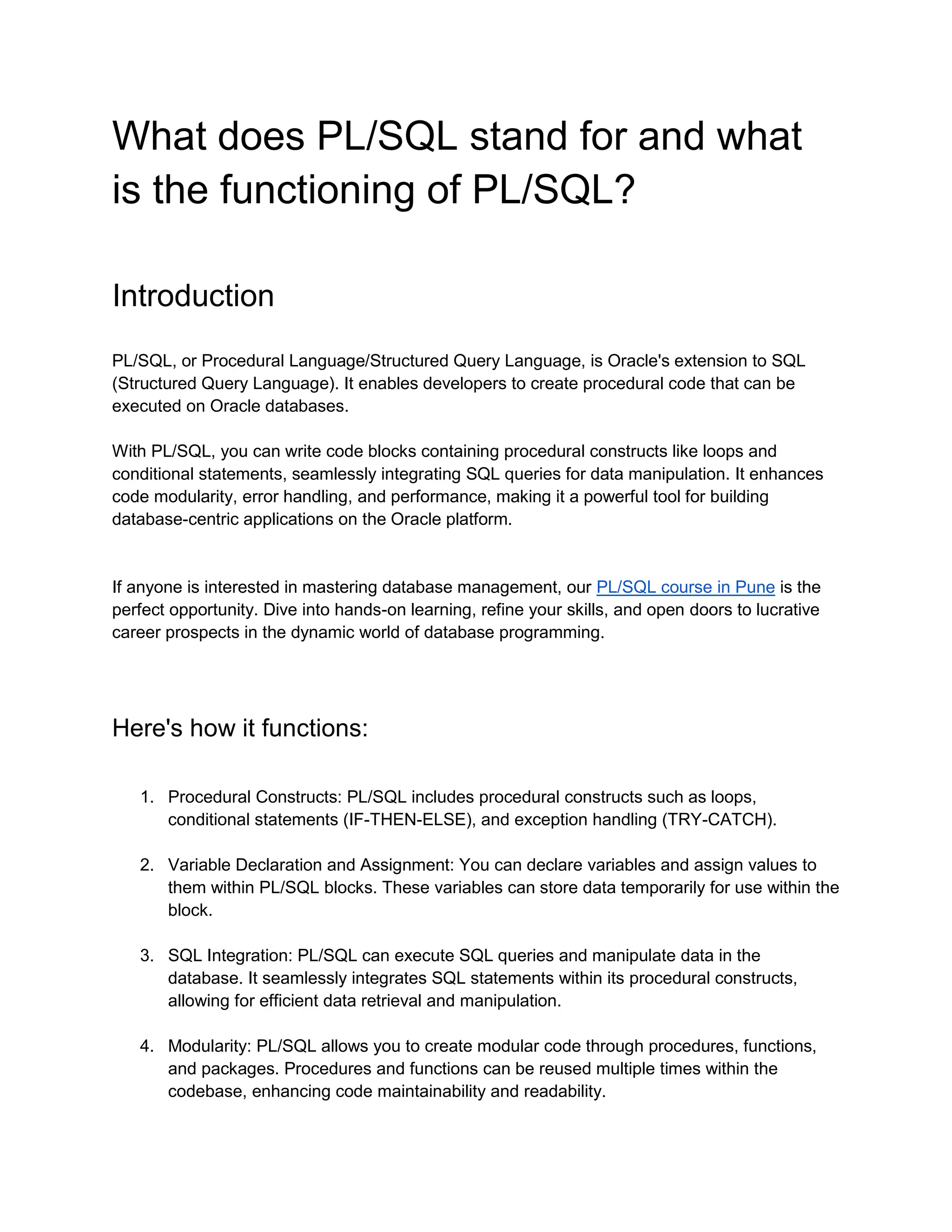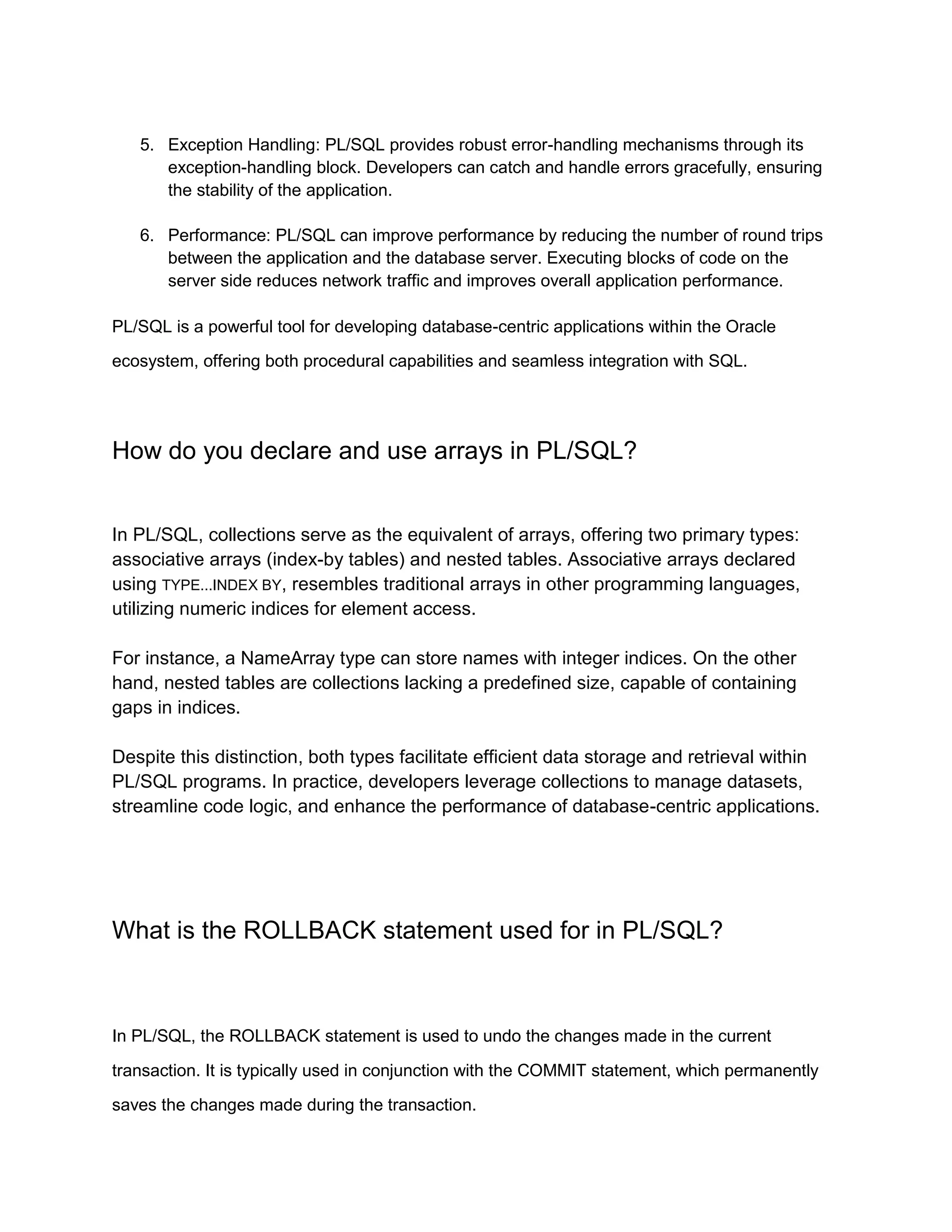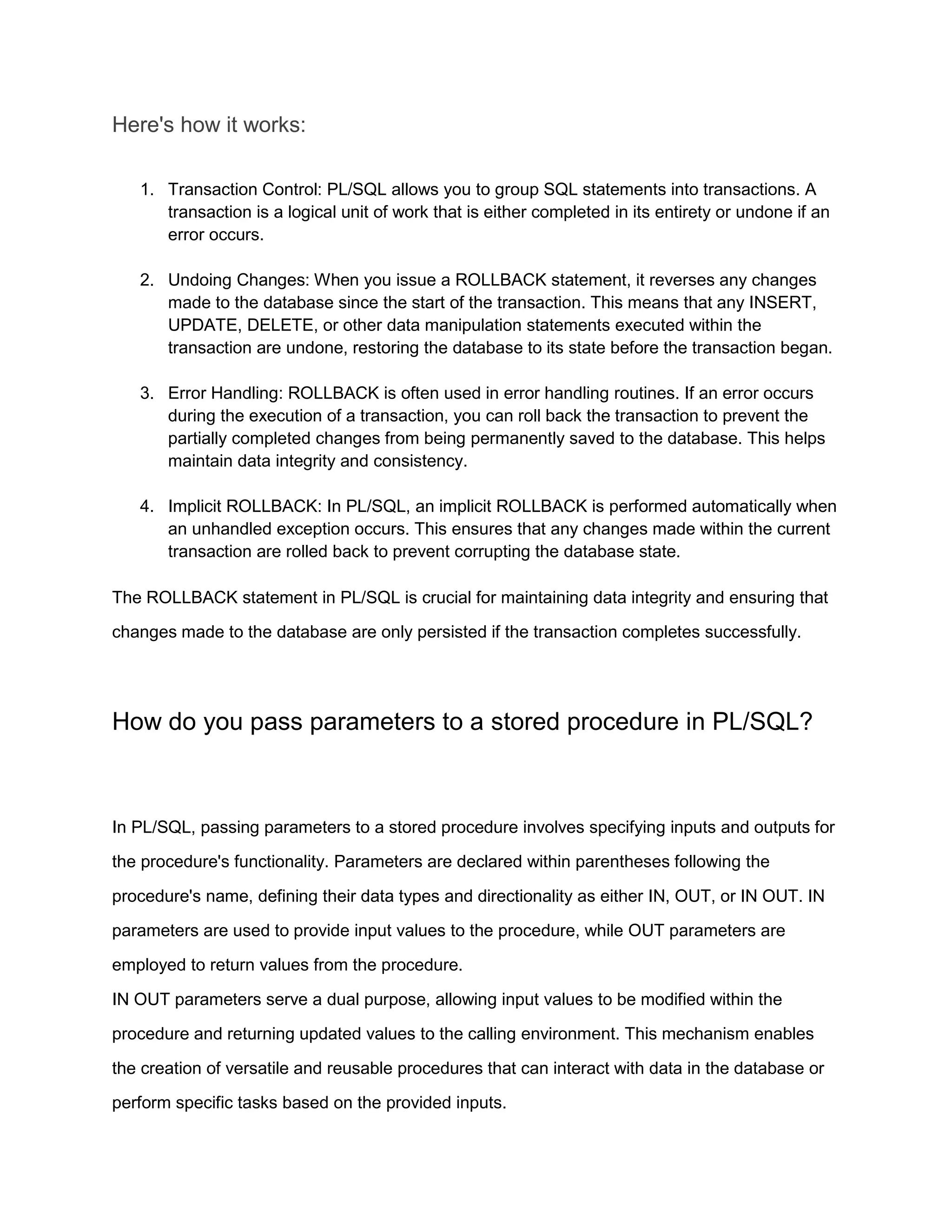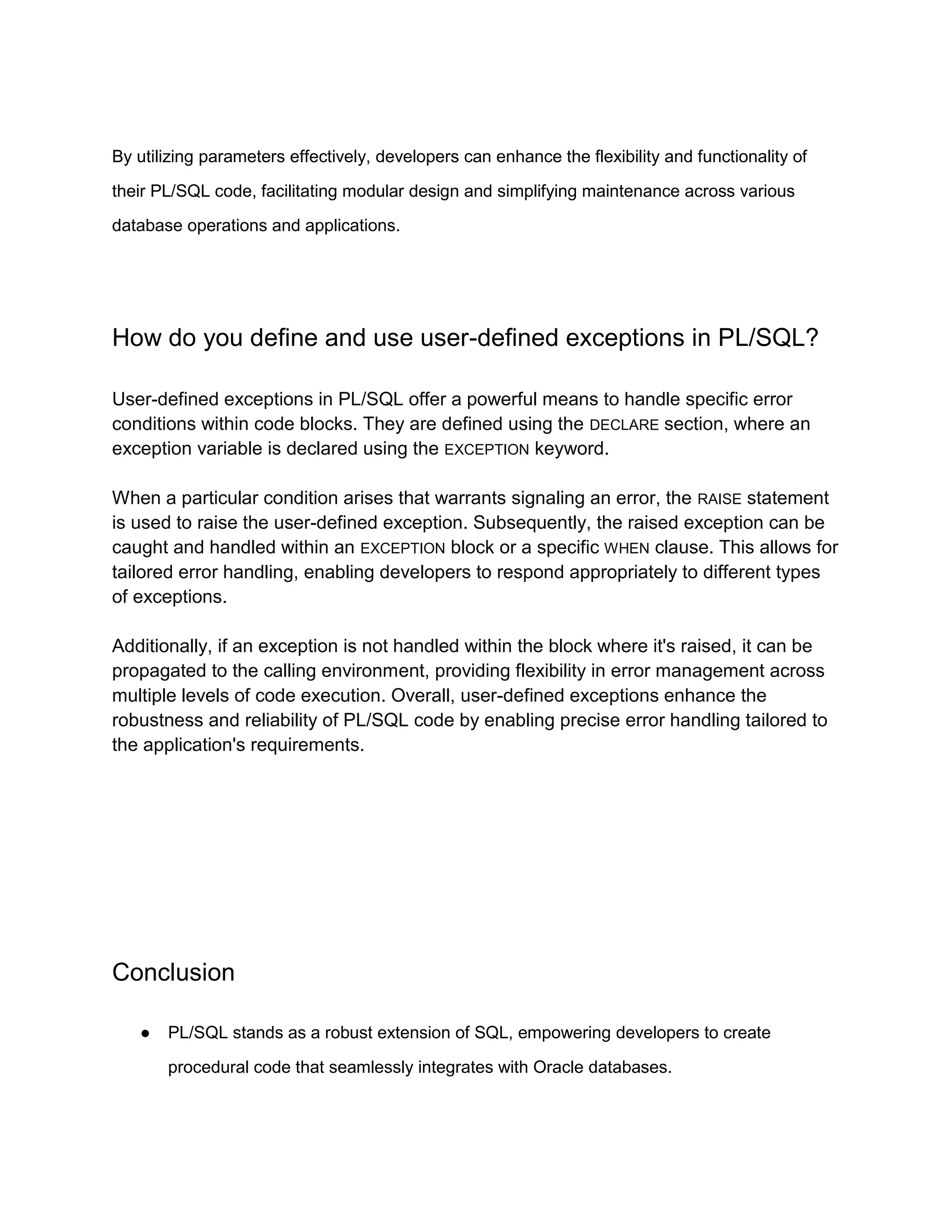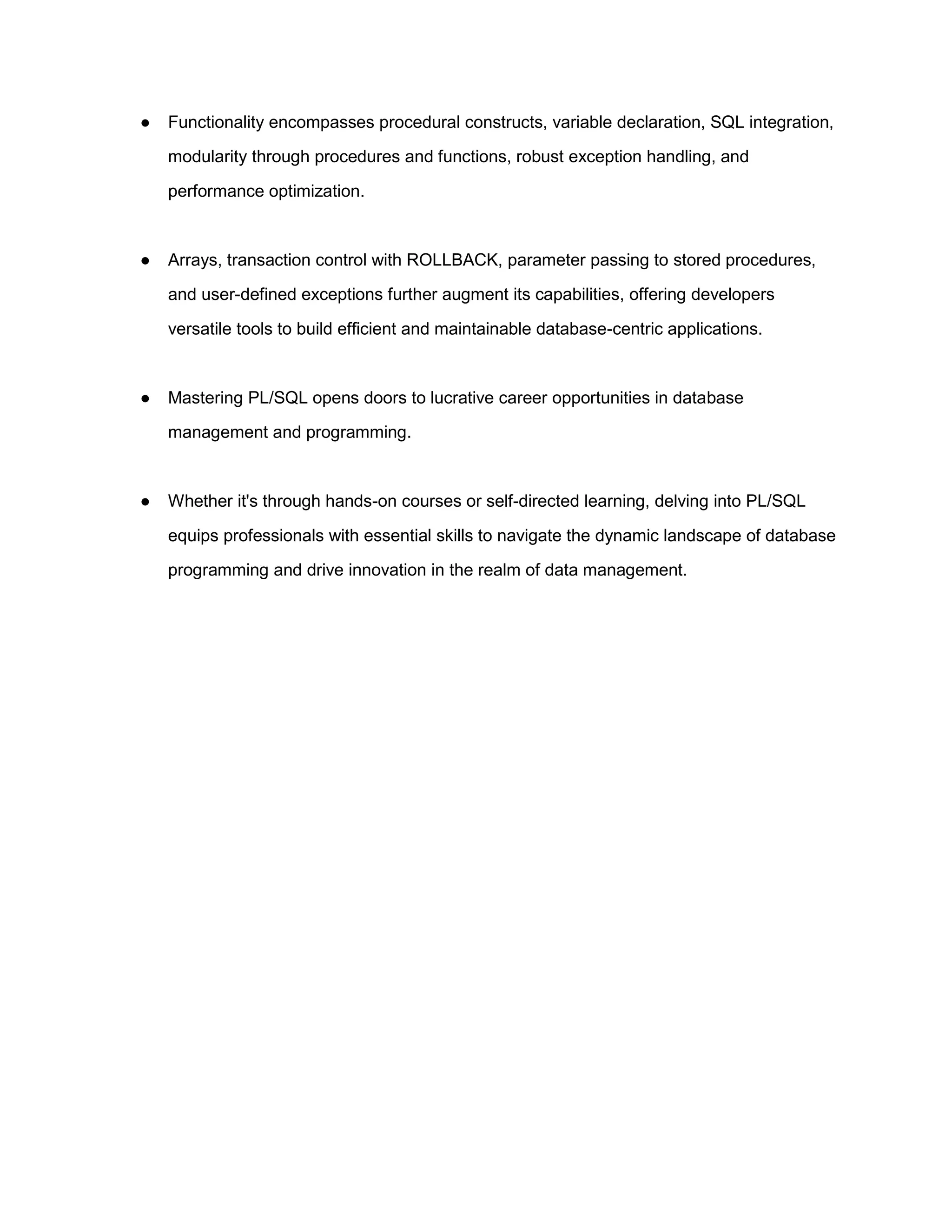PL/SQL, or Procedural Language/Structured Query Language, is Oracle's extension to SQL that allows developers to create procedural code for Oracle databases, enhancing modularity, error handling, and performance. Key features include procedural constructs, variable declarations, SQL integration, collections as arrays, rollback for transaction control, and user-defined exceptions. Mastering PL/SQL provides valuable skills for database management and programming, with promising career opportunities.
